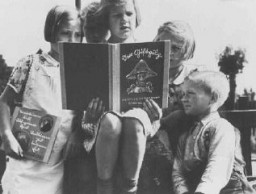You searched for: 5G基站项目系统搭建【TG���������@EK7676】平台包网搭建5G基站项目系统搭建【TG���������@EK7676】平台包网搭建laVSUManA8
<< Previous | Displaying results 71-80 of 250 for "5G基站项目系统搭建【TG���������@EK7676】平台包网搭建5G基站项目系统搭建【TG���������@EK7676】平台包网搭建laVSUManA8" | Next >>
-
Displaced Persons: Administration
ArticleLearn about the establishment and administration of displaced persons camps after WWII and the experiences of Jewish DPs.
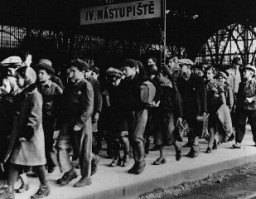
-
Chaim Yelin
ArticleYiddish writer Chaim Yelin was a leader of the Kovno ghetto underground resistance movement again the Germans.
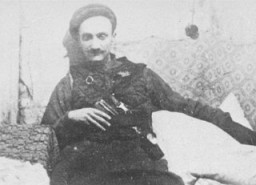
-
Fürstengrube
ArticleLearn about Fürstengrube subcamp of Auschwitz, including its establishment, administration, prisoner population, and forced labor and conditions in the camp.
-
Sobibor: Key Dates
ArticleExplore a timeline of key events in the history of the Sobibor killing center in the General Government, the German-administered territory of occupied Poland.
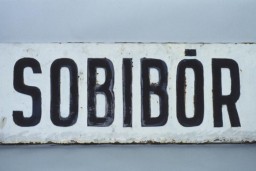
-
Izak Lichtenstein Testimony Excerpt
ArticleRead an excerpt from Izak Lichtenstein’s 1947 testimony about the resistance movement in the Lachva (Lachwa) ghetto.
-
Theresienstadt: Final Weeks, Liberation, and Postwar Trials
ArticleThe Theresienstadt camp-ghetto existed from 1941 to 1945. Learn about its final weeks, liberation, and the postwar trials of SS commandants and other staff.
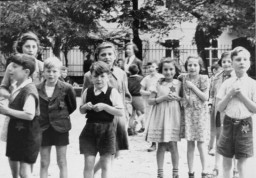
-
Wall surrounding the cemetery at Hadamar
PhotoView of the wall surrounding the cemetery of the Hadamar euthanasia killing center. Jagged pieces of glass were placed on the wall to discourage observers. This photograph was taken by an American military photographer soon after the liberation of Hadamar. Germany, April 5, 1945.
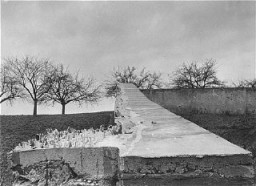
-
US Army soldier views the cemetery at Hadamar
PhotoA US Army soldier views the cemetery at Hadamar, where victims of the Nazi euthanasia program were buried in mass graves. This photograph was taken by an American military photographer soon after the liberation. Germany, April 5, 1945.
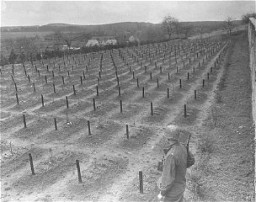
-
Sergeant Alexander Drabik, first American soldier to cross the Rhine at Remagen
PhotoSergeant Alexander Drabik, the first American soldier to cross the bridge at Remagen, receiving the Distinguished Service Cross for his heroism. April 5, 1945. US Army Signal Corps photograph taken by J Malan Heslop.
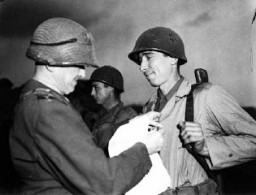
-
German children read an anti-Jewish propaganda book titled Der Giftpilz
PhotoGerman children read an anti-Jewish propaganda book for children titled Der Giftpilz (The Poisonous Mushroom). The girl on the left holds a companion volume, the translated title of which is "Trust No Fox." Germany, ca. 1938. (Source record ID: E39 Nr .2381/5)
